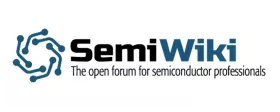TSMC on Collaboration: JIT Ecosystem Development
Cliff Hou of TSMC gave the keynote today at SNUG on Collaborate to Innovate: a Foundry's Perspective. Starting around 45nm the way that a foundry has to work with its ecosystem fundamentally changed. Up until then, each process generation was similar enough to the previous one, apart obviously from size, that it could be designed with the EDA tools already out there. Yes, new factors like signal integrity would grow in importance but this happened over several process generations and so was incremental. Basically, designers would wait for the first release of the Spice decks and the DRC rule decks and then get going.
This doesn't work any more. Since then each process generation has a major discontinuity:
- 45nm: power must be addressed
- 28nm: high-K metal gate
- 20nm: double patterning
- 16nm: FinFET
- 10nm: multiple patterning and spacer
To read the full article, click here
Related Semiconductor IP
- Ultra-Low-Power LPDDR3/LPDDR2/DDR3L Combo Subsystem
- Parameterizable compact BCH codec
- 1G BASE-T Ethernet Verification IP
- Network-on-Chip (NoC)
- Microsecond Channel (MSC/MSC-Plus) Controller
Related Blogs
- MediaTek is on the Move with TSMC!
- IEDM: TSMC on 3nm Device Options
- Synopsys Accelerates Multi-Die System Designs With Successful UCIe PHY IP Tape-Out on TSMC N3E Process
- Synopsys Tapes Out SLM PVT Monitor IP on TSMC N5 and N3E Processes
Latest Blogs
- What Does a GPU Have to Do With Automotive Security?
- Physical AI at the Edge: A New Chapter in Device Intelligence
- Rivian’s autonomy breakthrough built with Arm: the compute foundation for the rise of physical AI
- AV1 Image File Format Specification Gets an Upgrade with AVIF v1.2.0
- Industry’s First End-to-End eUSB2V2 Demo for Edge AI and AI PCs at CES
